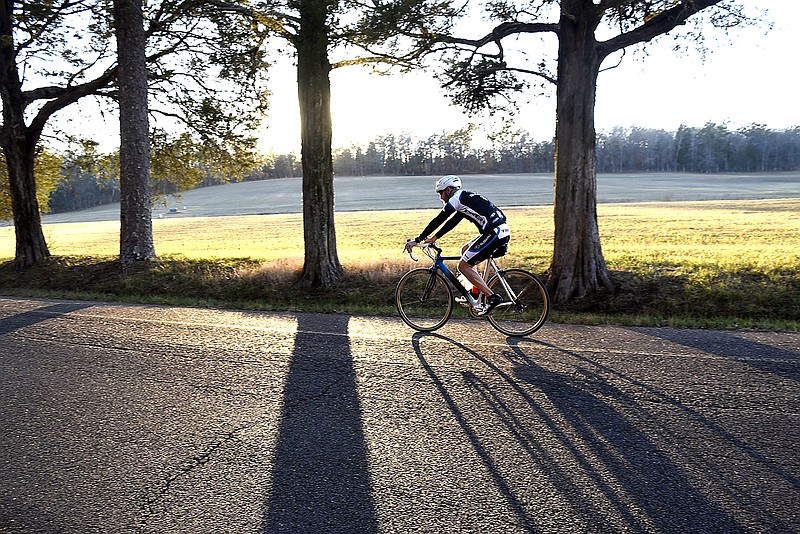A group of 20 cyclists will pedal away from New Echota, Ga., on Sunday morning, kicking off an 18-day trip to retrace the Trail of Tears.
The annual Remember the Removal Bike Ride will run from North Georgia, through Southeast Tennessee and west into Tahlequah, Okla., on June 22. The trip includes a stop Sunday night at Red Clay State Historic Park in Bradley County, as well as lunch Monday at the Hiwassee River Heritage Center in Charleston, Tenn.
The group includes 12 riders from the Cherokee Nation in northwest Oklahoma and eight riders from the Eastern Band of Cherokee Indians in North Carolina. The purpose of their 950-mile trek is to help develop the group into a new crop of Native American leaders, educate them further on their heritage, and promote national parks.
Ellic Miller, 23, of the Cherokee Nation, said the group's members have trained for this trip since January. They started by hitting stationary bikes on weekends, as well as running and doing push-ups and sit-ups. In February, they received their Specialized road bicycles, allowing them to hit the pavement.
On weekends, the group took classes on Cherokee history and the nation's ancient language. Afterward, they hit the road, cycling about 15 miles on their earliest trips. With time, as they pumped more and more and built their leg strength, the group began riding 40 or 50 miles at a time.
Miller said he expects the group will ride about 60 miles a day. They will camp for two nights of their trip and stay in hotels the rest of the way. He hopes the trip will be a journey, making him a stronger person.
"It's going to be pretty stressful sometimes," he said. "We're going to be under a lot of pressure. We're going to be sore. It'll be cool to see how I react."
Macie Sullateskee, 19, said she had to start eating healthier and cut soda from her diet.
"At first, it was really hard," she said of her training. "Little, bitty, gradual hills felt like a mountain."
She said the educational aspect of the preparation has been rewarding. Like most children, she learned in school about the Trail of Tears, in which an estimated 4,000 of 16,000 Cherokee travelers died as the U.S. government forced them west - many of them from Northwest Georgia.
But Sullateskee said learning about the history again as a young adult delivered a more substantial impact. In particular, she felt affected by reading "The Journal of Rev. Daniel S. Butrick," a firsthand account of the Trail of Tears from a missionary who worked with the Cherokee.
She said a portion of the 70-page book recounts an event involving a pregnant woman. Though she felt herself go into labor, the government officials did not allow the woman to stop - until, eventually, she couldn't march farther. Angered by her dissent (or rather, childbirth), a soldier stabbed the woman with a bayonet, killing her.
"It just shows you how the women were treated," Sullateskee said.
This week, as the last step before the trip, the group from the Cherokee Nation met with the Eastern Band of Cherokee Indians in North Carolina. Sullateskee has been here before, she said. And every time, she takes in her surroundings, and she thinks about the past, and she says goodbye.
"I can only imagine what our ancestors felt when they left," she said.
Contact staff writer Tyler Jett at 423-757-6476 or tjett@timesfreepress.com. Follow him on Twitter @LetsJett.
